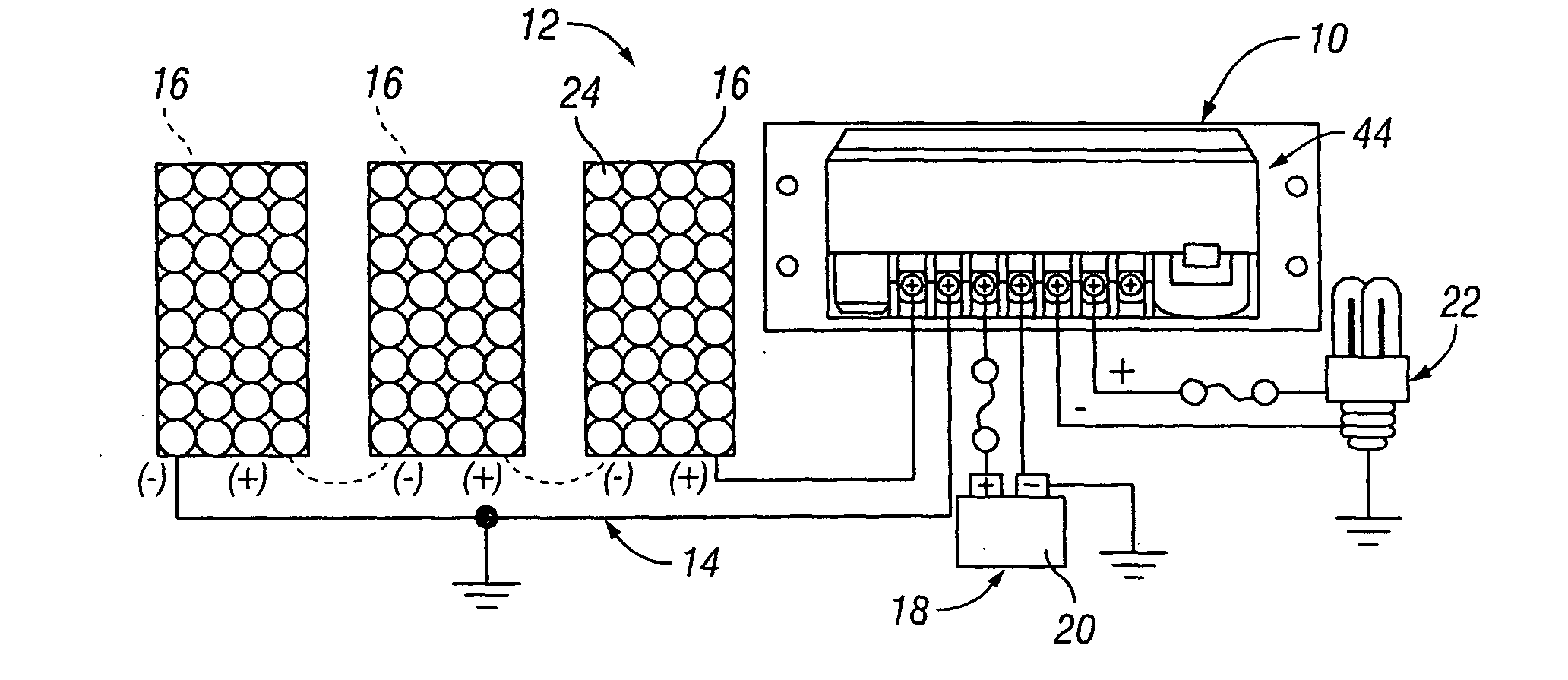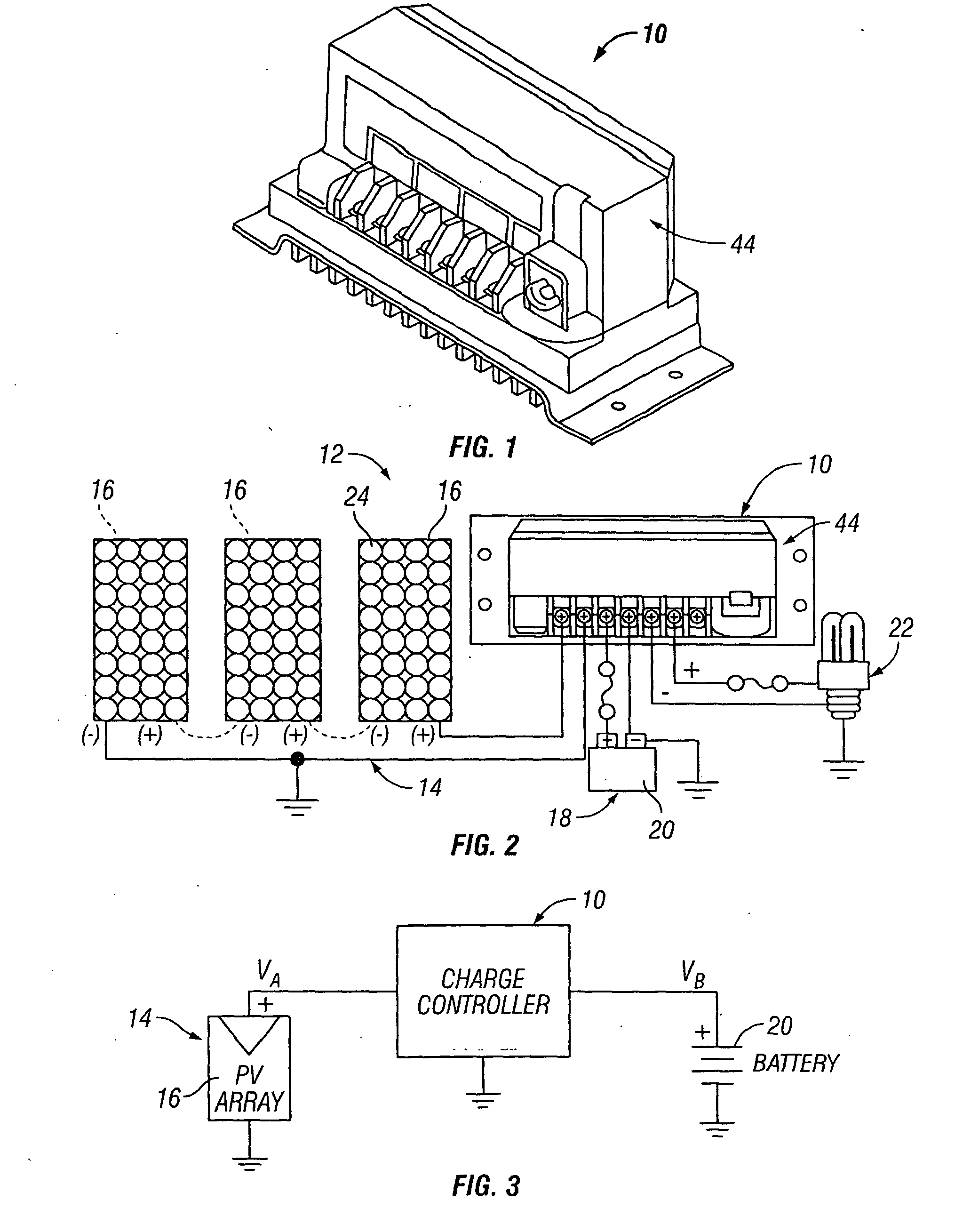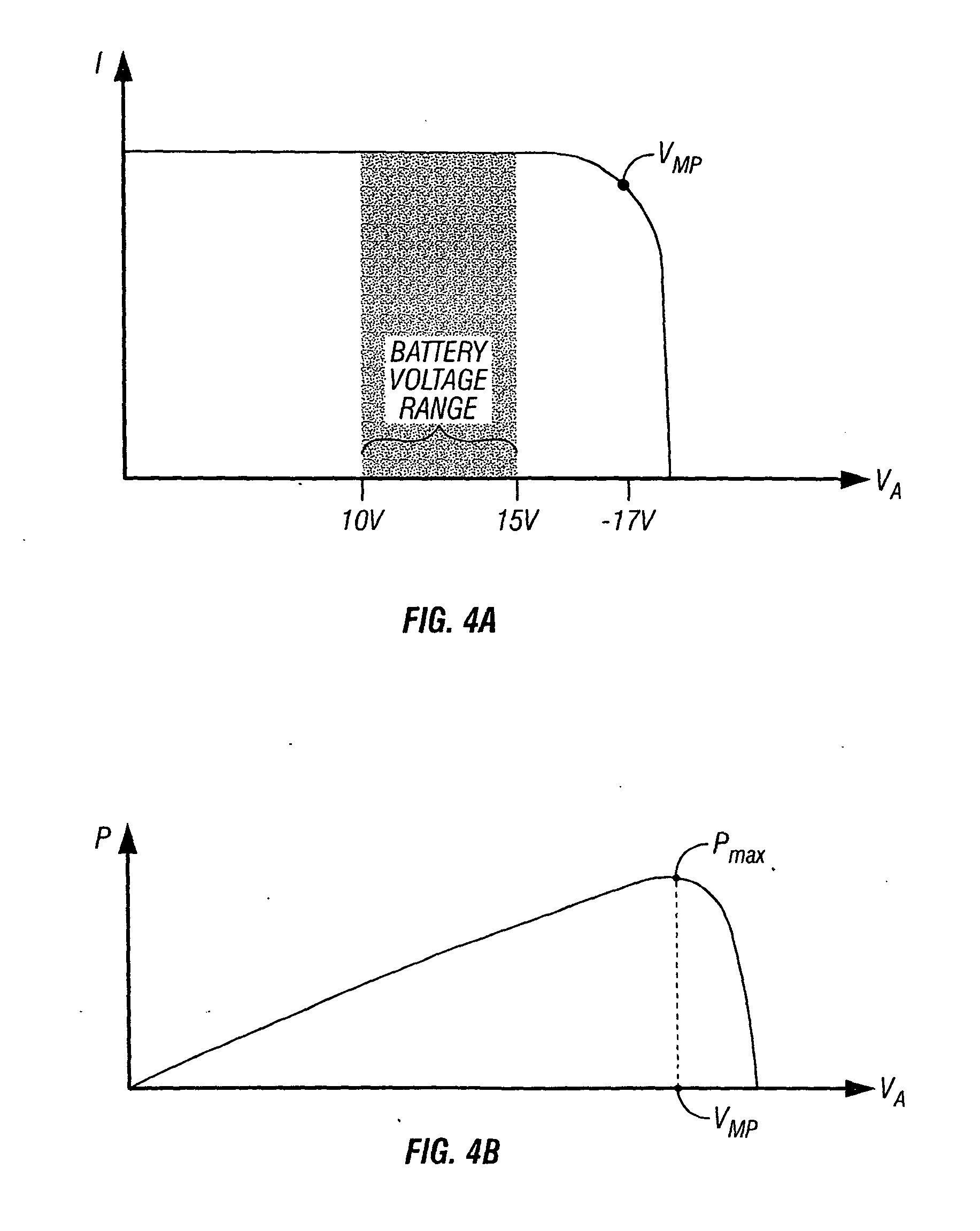Maximum Power Point Tracking Charge Controller with Coupled Inductor Multi-phase Converter
a charge controller and inductance multi-phase technology, applied in secondary cell servicing/maintenance, process and machine control, instruments, etc., can solve the problems of non-mppt charge controllers artificially limit power production to a sub-optimal level, under-utilization of the maximum power output of pv arrays, and significant power production
- Summary
- Abstract
- Description
- Claims
- Application Information
AI Technical Summary
Problems solved by technology
Method used
Image
Examples
Embodiment Construction
[0035]A maximum power point tracking (MPPT) charge controller 10 having a coupled inductor multi-phase converter is illustrated in FIGS. 1 and 2, the MPPT charge controller 10 being shown in FIG. 2 incorporated in a photovoltaic (PV) system 12. The PV system 12 comprises a photovoltaic (PV) array 14 including one or more photovoltaic (PV) modules or panels 16, a battery bank 18 including one or more batteries 20, and the MPPT charge controller 10 electrically connected to the array 14 and to the battery bank 18. The MPPT charge controller 10 is shown in FIG. 2 with a load output connection of the controller electrically connected to a load 22 that is to be powered by the PV system 12. The load output connection on the MPPT charge controller 10 functions to deliver battery voltage to the load 22. Typical loads 22 include lights, pumps, motors, DC appliances, and electronic devices. The load output connection of the MPPT charge controller 10 can be electrically connected to a load dis...
PUM
 Login to View More
Login to View More Abstract
Description
Claims
Application Information
 Login to View More
Login to View More - R&D
- Intellectual Property
- Life Sciences
- Materials
- Tech Scout
- Unparalleled Data Quality
- Higher Quality Content
- 60% Fewer Hallucinations
Browse by: Latest US Patents, China's latest patents, Technical Efficacy Thesaurus, Application Domain, Technology Topic, Popular Technical Reports.
© 2025 PatSnap. All rights reserved.Legal|Privacy policy|Modern Slavery Act Transparency Statement|Sitemap|About US| Contact US: help@patsnap.com



